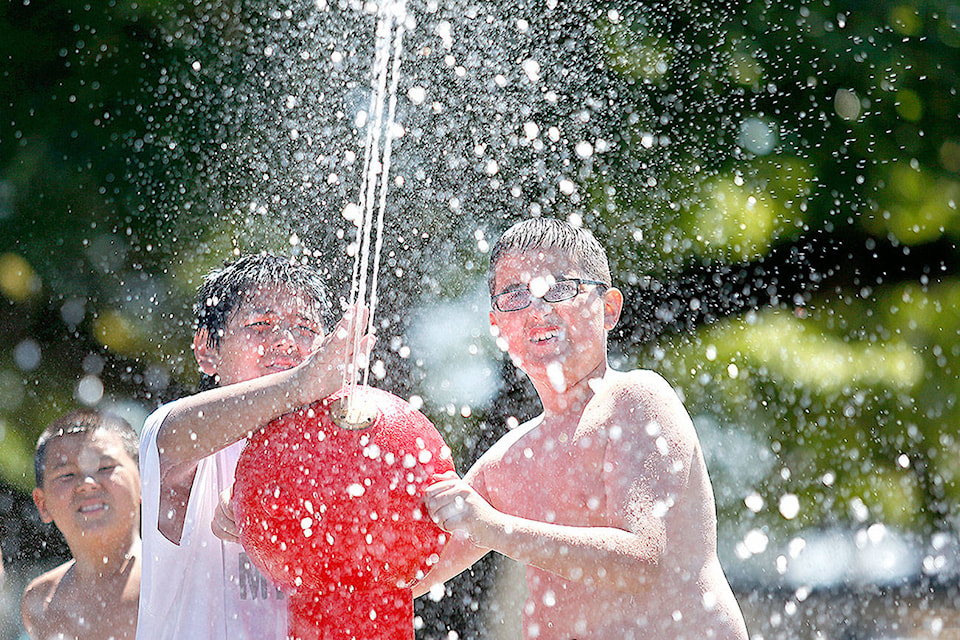What if there was a simple, inexpensive and fun way to address some of the major challenges facing humanity today. What if it could help improve children’s health, development and well-being?
Imagine a solution that could stem the current epidemics of obesity, anxiety and depression affecting children and youth today. Imagine that this solution could also promote brain health, creativity and academic achievement and prepare our children for the rapidly-changing work force.
READ MORE: B.C. to fund programs to help kids deal with anxiety
Along the way it could reduce incidence of allergies, asthma and other immunity challenges and improve eye health. It could foster a culture of environmental stewardship and sustainability and help build the health of cities — promoting neighbourliness and feelings of community connection.
Imagine that this intervention could also help countries meet their targets for many of the United Nations Sustainable Development Goals, such as the goals of Good Health and Well-being, Inclusive and Equitable Quality Education, Decent Work and Economic Growth and Climate Action.
This isn’t an expensive intervention, or one that parents have to force their children to do — like homework or eating their vegetables. Rather than dreading it, children report being at their happiest when doing it and they seek ways to keep at it for as long as possible.
What is this fix-all simple solution? Playing outside.
The magic of outdoor play
Many of us have fond memories of childhoods spent outside, hanging out with friends in our neighbourhoods, parks and wild places, making up the rules as we went along, with minimal (if any) adult supervision.
We need only reflect on our own play memories to realize how valuable these experiences can be and how they can shape our lifelong health and development. The research is now catching up to our intuitions, recognizing the vast and diverse benefits of outdoor play.
Playing outside is not the same as playing inside. There are unique benefits of being in the outdoors, particularly in nature, that don’t come as readily indoors. When children are allowed to play the way they want to play in stimulating environments, they move more, sit less and play longer.
They get their hands in the dirt and are exposed to microbes that help them build their immunity. They make their own goals and figure out the steps to attain those goals, helping them build executive function skills. They learn, build resilience and develop their social skills, learn how to manage risks and keep themselves safe. Their eyes get the exercise they need to help combat short-sightedness.
We are rediscovering the magic of outdoor play. Governments see it as a way of getting kids active and averting the obesity crisis. Schools and early childhood centres see it as a way of promoting academic and socio-emotional learning. Corporations see it as a way of preparing children for the jobs of the future that will focus on creativity, empathy and connection with others. Children just see it as a way of having fun and feeling free!
Adults must let go of their fears
There are three key ingredients to supporting outdoor play: time, space and freedom.
Kids need time to be able to play outside. In schools, that means recess policies that get kids outside every day, finding opportunities to use the outdoors for learning and limiting homework. At home, that means laying aside screens and limiting scheduled structured activities.
Kids also need high quality outdoor spaces to play in. That doesn’t necessarily mean expensive playground equipment. It means spaces where all children feel welcome, regardless of their abilities and backgrounds, that they can make their own and that also have loose parts (for example sticks, stones, water and cardboard boxes) they can use and let their imagination shape the play.
In cities, that means being prepared for and allowing play to happen everywhere, not just parks and playgrounds. We need to design inclusive and child-friendly cities where kids feel welcome everywhere and can easily access nature.
Finally, freedom: the biggest barrier to children’s ability to play the way they want to play is adults. We need to let go of our excessive fears of injuries and kidnapping and realize that the benefits of kids getting out to play far outweigh the risks. My lab developed a risk reframing tool for parents and caregivers to help them on this journey.
Support the children in your life
Helping support children’s outdoor play can be as simple as opening the front door. It doesn’t have to be complicated or expensive. If we all do our bit, we can help bring back this crucial activity that should be part of all children’s daily lives, regardless of age, cultural background, gender or ability.
There are lots of tools to help you get started, whether you’re a parent, caregiver, educator, city planner or a neighbour.
I would encourage you to consider one simple and attainable thing you are going to do today to help get the child or children in your life get out to play.
Mariana Brussoni, Associate Professor of Pediatrics and Population and Public Health, University of British Columbia , The Canadian Press
